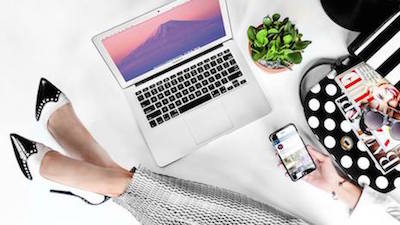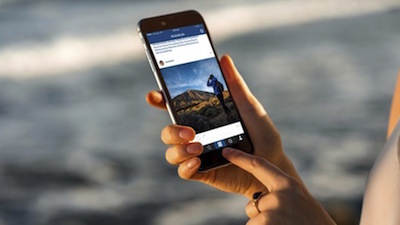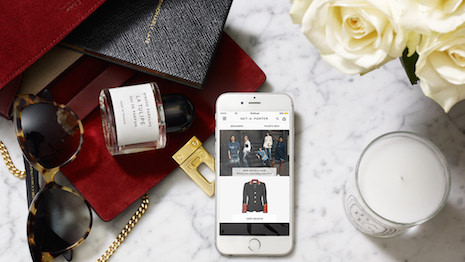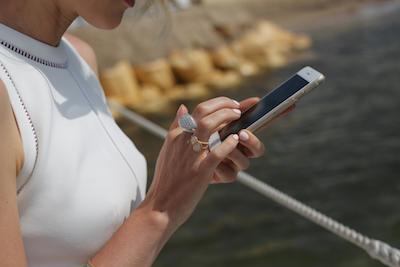Consumers visited luxury brand Web sites a total of 185.2 million times in the last 12 months, a decrease of 11.2 percent year-over-year, according to a new report from PMX Agency.
While consumer visits have dropped off, many brands in the luxury space have upped their Web features to accommodate ecommerce and strengthen awareness in a bid for traffic and to answer shopper’s online expectations. PMX Agency’s seventh annual “Trend Report: Luxury Brands Online” gives an overview of site visit, brand searches and social media interaction metrics to paint a clear picture of reach and consumer engagement within luxury.
“The drop in online visits can be attributed, in part, to external factors like fluctuating exchange rates, uncertain economic outlooks across the globe and reduced travel due not only to financial concerns but also terrorism,” said Glenn Lalich, vice president of research at PMX Agency.
“Also notable is that more luxury interactions may be occurring solely with social platforms on social applications – predominantly mobile–and not always reaching the traditional luxury brand Web site,” he said.
PMX Agency tracked more than 80 new and established luxury apparel brands for its benchmark study of the industry’s online behavior.
Online views
Although PMX Agency has seen a decline in Web traffic in the luxury space, mobile device usage has increased compared to the average Internet user. Luxury’s interactions on social media, especially image-rich platforms such as Instagram, which is most intuitive via mobile, have increased tenfold.
By brand, Ralph Lauren and Michael Kors have the top online market share within the industry. With 19.2 percent of online market share, Ralph Lauren accounts for approximately one in five visits for the luxury category. Michael Kors is slightly behind at 18.5 percent.
For European luxury houses such as Louis Vuitton, Gucci, Chanel, Burberry, Hermès and Christian Louboutin, market share is below 10 percent. Worse off, with an online market share of about 1 percent or 1.5 percent, are iconic houses such as Versace, Dior, Ferragamo, Prada, Saint Laurent, Armani and others.
Together the top 10 brands account for 78.5 percent of Web traffic for the entire luxury category.
On mobile, site traffic is much stronger for a category market share of 52 percent. By brand, accessories label MCM carries 61 percent of mobile device shares, followed by Michael Kors at 60 percent and Louis Vuitton at 58 percent.
A number of brands have also seen a significant increase in online market share total visits year-over-year. Saint Laurent, for example, saw a 518,919 visit increase between June 2015 and June 2016.
As for online growth between June 2015 and June 2016, Balmain leads the category with a 68 percent year-over-year growth in online market share.
To discover luxury brands online, consumers often turn to search engines at a rate of 51.6 percent, of which 54 percent of searches are organic and 46 percent are paid. Social media discovery ranks second, used by consumers only 6.6 percent of the time and lead by Facebook.

Image courtesy of retailer Bloomingdale’s
Only 6.2 percent of luxury brand Web traffic is generated organically, according to the report. For instance, Louis Vuitton’s Web domain is the source of only 1.9 percent of its traffic, with other brands recording less than one full percent.
Email marketing still has its place, especially for consumers already familiar with a particular brand. Email services is the source of Web traffic 2.6 percent of the time, and is typically more of a driver during timely, seasonal offerings.
Stellar social
As mobile usage increases, consumers are more apt to spend free time on social media. According to PMX Agency’s report, luxury brands have recorded a 40 percent increase in social media followers from the year-ago.
The 80 brands tracked for the benchmark have a combined total of 479 million likes and followers across Facebook, Instagram, Twitter and YouTube. Of this massive audience, luxury brand followers account for 198.9 million likes on Facebook and 194.3 million on Instagram. Twitter and YouTube have 83.6 million followers and 2.1 million subscribers, respectively.

Instagram is best used on a mobile device
By brand as of August 2016, Louis Vuitton has 18.6 million followers that “like” the house. Following close behind are Burberry and Chanel with approximately 17 million likes each and Michael Kors with 16.7 million.
On Instagram, ranked as the top social form of consumer engagement, Chanel has 14.3 million followers. Louis Vuitton counts 12.4 million, Dior 11.1 million and Dolce & Gabbana 10.1 million. Many brands, including Christian Louboutin, Valentino and Balmain, they have a larger Instagram audience compared to Facebook.
Although not considered in PMX Agency’s report, social sharing application Snapchat has emerged as a powerful way for brands to capture consumer attention, especially aspirational millennials, through “unpolished content” that establishes a “closeness” not afforded by other forms of social media (see story).
For example, prolific social media marketer Michael Kors’ sponsored Snapchat lens for National Sunglasses Day garnered more than 104 million total views, according to the brand.
On June 27, Michael Kors allowed consumers to try on its Kendall II sunglasses via a one-day-only Snapchat filter lens. Using Snapchat as a virtual mirror, consumers were able to try on three colors of the Kendall II style, with each pair creating a different experience.
During the day-long campaign, Michael Kors saw an 18 percent increase in ad awareness and a 12.5 percent lift in sunglass preference. Snapchat users interacted with the lens for 26 seconds on average (see story).
By far, Instagram has proved itself useful and effective among luxury marketing.
“For certain, one of the biggest stories is the near-dominance of Instagram and its followers,” Mr. Lalich said. “The vast majority of brands covered now have much larger fan bases on Instagram than Facebook.
“As noted in the report, Christian Louboutin, Valentino and Balmain each have 4 to 5 million more Instagram followers than Facebook followers. That’s huge. And the gap for some is huge,” he said. “For Balmain, that’s 600,000 Facebook followers versus 5 million Instagram followers.,” he said. Balmain remains a standout overall. They were barely registering in our 2014 study.
“Since then [Balmain] have topped the list for top growth in brand site visits for both 2015 and 2016. Factors include a new young creative director, a major focus on social media, a major infusion of celebrities and key fast-fashion partnerships – all of which both broadened and deepened brand awareness significantly.”
from Apparel and accessories – Luxury Daily https://www.luxurydaily.com/ralph-lauren-michael-kors-dominate-luxurys-online-market-share-report/
via Your #1 Source to Finding Luxury & Designer Goods, Handbags & Clothes at or Below Wholesale: Click Here.


No comments:
Post a Comment